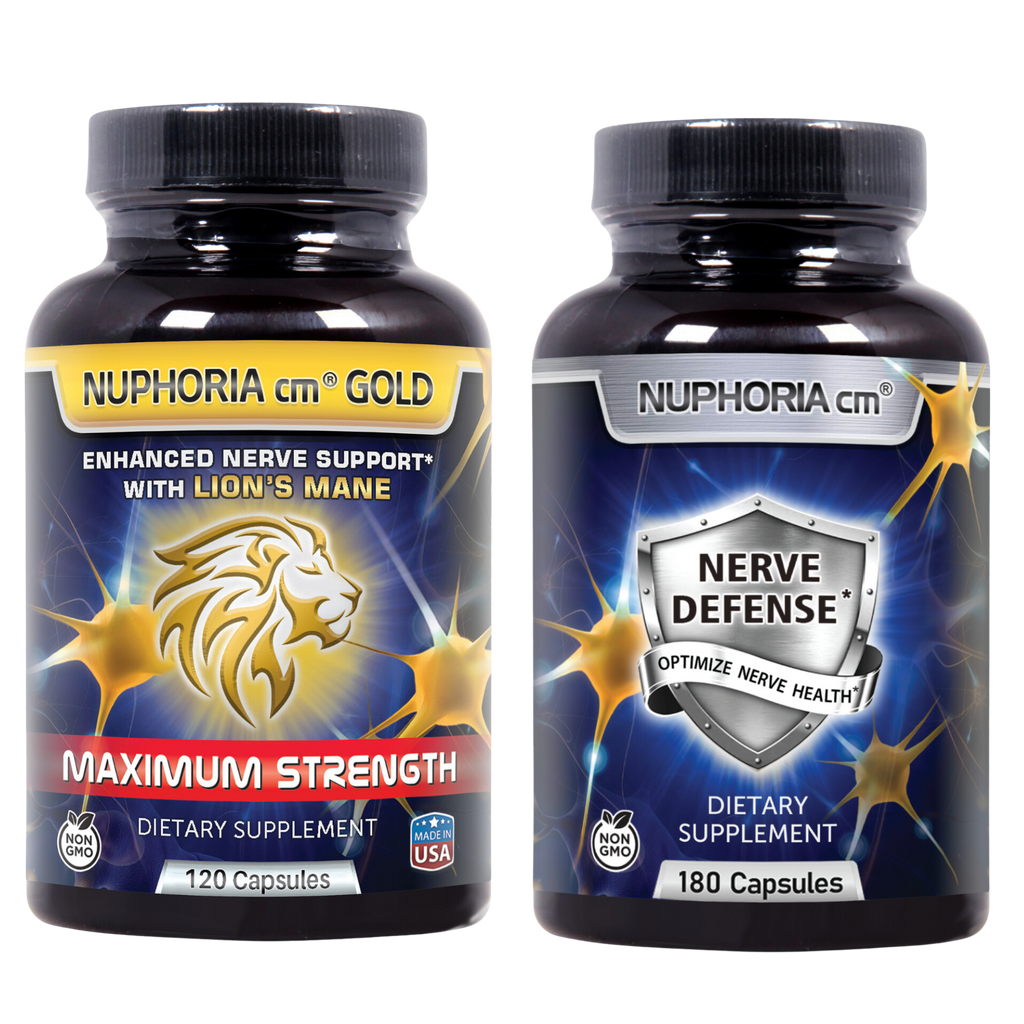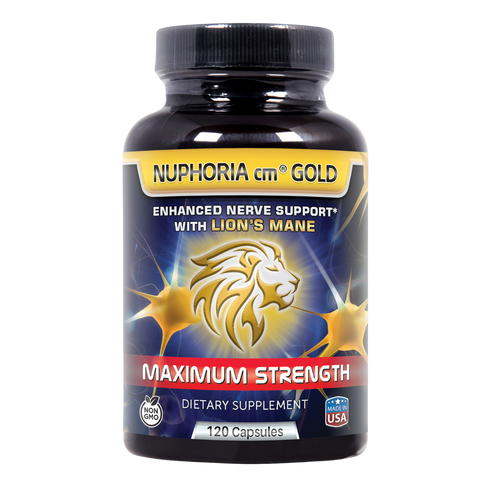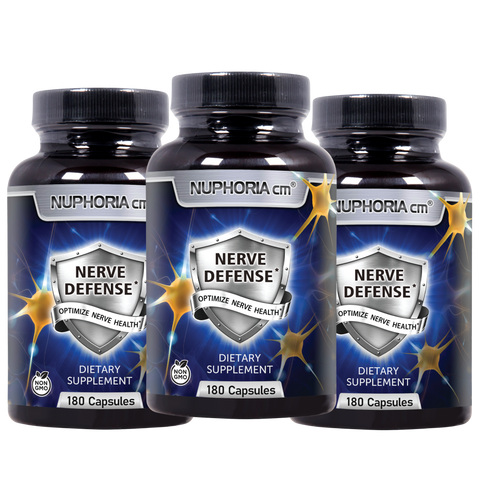I.R-Alpha Lipoic Acid Improves Nerve Blood Flow and Nerve Conduction
Diabetes Care 1995 Aug; 18(8): 1160-1167. https://doi.org/10.2337/diacare.18.8.1160
Lipoic Acid Improves Nerve Blood Flow, Reduces Oxidative Stress, and Improves Distal Nerve Conduction in Experimental Diabetic Neuropathy
Masaaki Nagamatsu, MD, Kim K Nickander, James D Schmelzer, Angel Raya, MD, PHD, Debra A Wittrock, Hans Tritschler, PHD and Phillip A Low, MD
Abstract
OBJECTIVE
To determine whether lipoic acid (LA) will reduce oxidative stress in diabetic peripheral nerves and improve neuropathy.
RESEARCH DESIGN AND METHODS
We used the model of streptozotocin-induced diabetic neuropathy (SDN) and evaluated the efficacy of LA supplementation in improving nerve blood flow (NBF), electrophysiology, and indexes of oxidative stress in peripheral nerves affected by SDN, at 1 month after onset of diabetes and in age-matched control rats. LA, in doses of 20, 50, and 100 mg/kg, was administered intraperitoneally five times per week after onset of diabetes.
RESULTS
NBF in SDN was reduced by 50% LA did not affect the NBF of normal nerves but improved that of SDN in a dose-dependent manner. After 1 month of treatment, LA-supplemented rats (100 mg/kg) exhibited normal NBF. The most sensitive and reliable indicator of oxidative stress was reduction in reduced glutathione, which was significantly reduced in streptozotocin-induced diabetic and alpha-tocopherol-deficient nerves; it was improved in a dose-dependent manner in LA-supplemented rats. The conduction velocity of the digital nerve was reduced in SDN and was significantly improved by LA.
CONCLUSIONS
These studies suggest that LA improves SDN, in significant part by reducing the effects of oxidative stress. The drug may have potential in the treatment of human diabetic neuropathy.
II.Oral Treatment with Alpha Lipoic Acid Improves Diabetic Polyneuropathy
Diabetes Care. 2006 Nov;29(11):2365-70.
Oral treatment with alpha-lipoic acid improves symptomatic diabetic polyneuropathy: the SYDNEY 2 trial.
Ziegler D1, Ametov A, Barinov A, Dyck PJ, Gurieva I, Low PA, Munzel U, Yakhno N, Raz I, Novosadova M, Maus J, Samigullin R.
Abstract
OBJECTIVE:
The aim of this trial was to evaluate the effects of alpha-lipoic acid (ALA) on positive sensory symptoms and neuropathic deficits in diabetic patients with distal symmetric polyneuropathy (DSP).
RESEARCH DESIGN AND METHODS:
In this multicenter, randomized, double-blind, placebo-controlled trial, 181 diabetic patients in Russia and Israel received once-daily oral doses of 600 mg (n = 45) (ALA600), 1,200 mg (n = 47) (ALA1200), and 1,800 mg (ALA1800) of ALA (n = 46) or placebo (n = 43) for 5 weeks after a 1-week placebo run-in period. The primary outcome measure was the change from baseline of the Total Symptom Score (TSS), including stabbing pain, burning pain, paresthesia, and asleep numbness of the feet. Secondary end points included individual symptoms of TSS, Neuropathy Symptoms and Change (NSC) score, Neuropathy Impairment Score (NIS), and patients' global assessment of efficacy.
RESULTS:
Mean TSS did not differ significantly at baseline among the treatment groups and on average decreased by 4.9 points (51%) in ALA600, 4.5 (48%) in ALA1200, and 4.7 (52%) in ALA1800 compared with 2.9 points (32%) in the placebo group (all P < 0.05 vs. placebo). The corresponding response rates (>/=50% reduction in TSS) were 62, 50, 56, and 26%, respectively. Significant improvements favoring all three ALA groups were also noted for stabbing and burning pain, the NSC score, and the patients' global assessment of efficacy. The NIS was numericallyreduced. Safety analysis showed a dose-dependent increase in nausea, vomiting, and vertigo.
CONCLUSIONS:
Oral treatment with ALA for 5 weeks improved neuropathic symptoms and deficits in patients with DSP. An oral dose of 600 mg once daily appears to provide the optimum risk-to-benefit ratio.
TRIAL REGISTRATION:
ClinicalTrials.gov NCT00328601.
III.Alpha Lipoic Acid Decrease Peripheral Neuropathy Symptoms
Int J Endocrinol. 2012; 2012: 456279. Published online 2012 Jan 26. doi: 10.1155/2012/456279
Alpha Lipoic Acid for Symptomatic Peripheral Neuropathy in Patients with Diabetes: A Meta-Analysis of Randomized Controlled Trials
Gerritje S. Mijnhout, Boudewijn J. Kollen, AlaaAlkhalaf, NannoKleefstra, and Henk J. G. Bilo
Based on the four level 1b randomized, placebo-controlled studies included here, there is evidence to support that alpha lipoic acid causes a significant and clinically relevant decrease in neuropathic pain when administered for a period of three weeks at a dosage of 600 mg per day (grade of recommendation
IV.Alpha Lipoic Acid Prevents Kidney Injury and Damage
J Am SocNephrol. 2002 Jan;13(1):108-16.
Alpha-lipoic acid attenuates hyperglycemia and prevents glomerular mesangial matrix expansion in diabetes.
Melhem MF, Craven PA, Liachenko J, et al. Alpha-lipoic acid attenuates hyperglycemia and prevents glomerular mesangial matrix expansion in diabetes. J Am SocNephrol. 2002;13:108-116.
Abstract
Previous studies demonstrated that 2 mo of dietary supplementation with alpha-lipoic acid (LA) prevented early glomerular injury in non-insulin-treated streptozotocin diabetic rats (D). The present study examined the effects of chronic LA supplementation (30 mg/kg body wt per d) on nephropathy in D after 7 mo of diabetes. Compared with control rats, D developed increased urinary excretion of albumin and transforming growth factor beta, renal insufficiency, glomerular mesangial matrix expansion, and glomerulosclerosis in association with depletion of glutathione and accumulation of malondialdehyde in renal cortex. LA prevented or ameliorated all of these changes in D. Because chronic LA supplementation also attenuated hyperglycemia in D after 3 mo, its effects on renal injury were compared with treatment of rats with sufficient insulin to maintain a level of glycemic control for the entire 7-mo period (D-INS) equivalent to that observed with LA during the final 4 mo. Despite superior longitudinal glycemic control in D-INS, urinary excretion of albumin and transforming growth factor beta, glomerular mesangial matrix expansion, the extent of glomerulosclerosis, and renal cortical malondialdehyde content were all significantly greater, whereas cortical glutathione content was lower than corresponding values in D given LA. Thus, the renoprotective effects of LA in D were not attributable to improved glycemic control alone but also likely reflected its antioxidant activity. The combined antioxidant and hypoglycemic actions of LA both may contribute to its utility in preventing renal injury and other complications of diabetes.




























